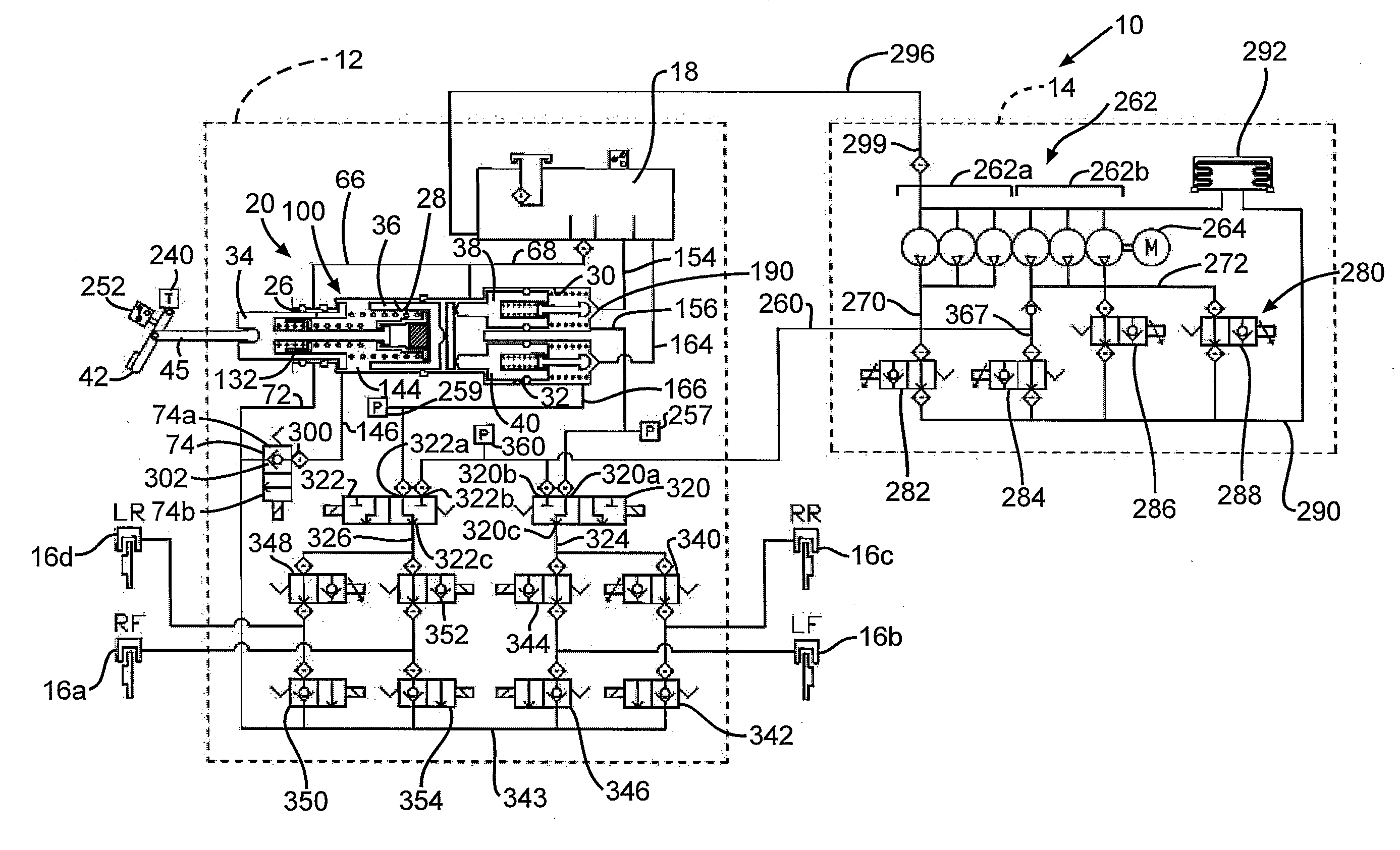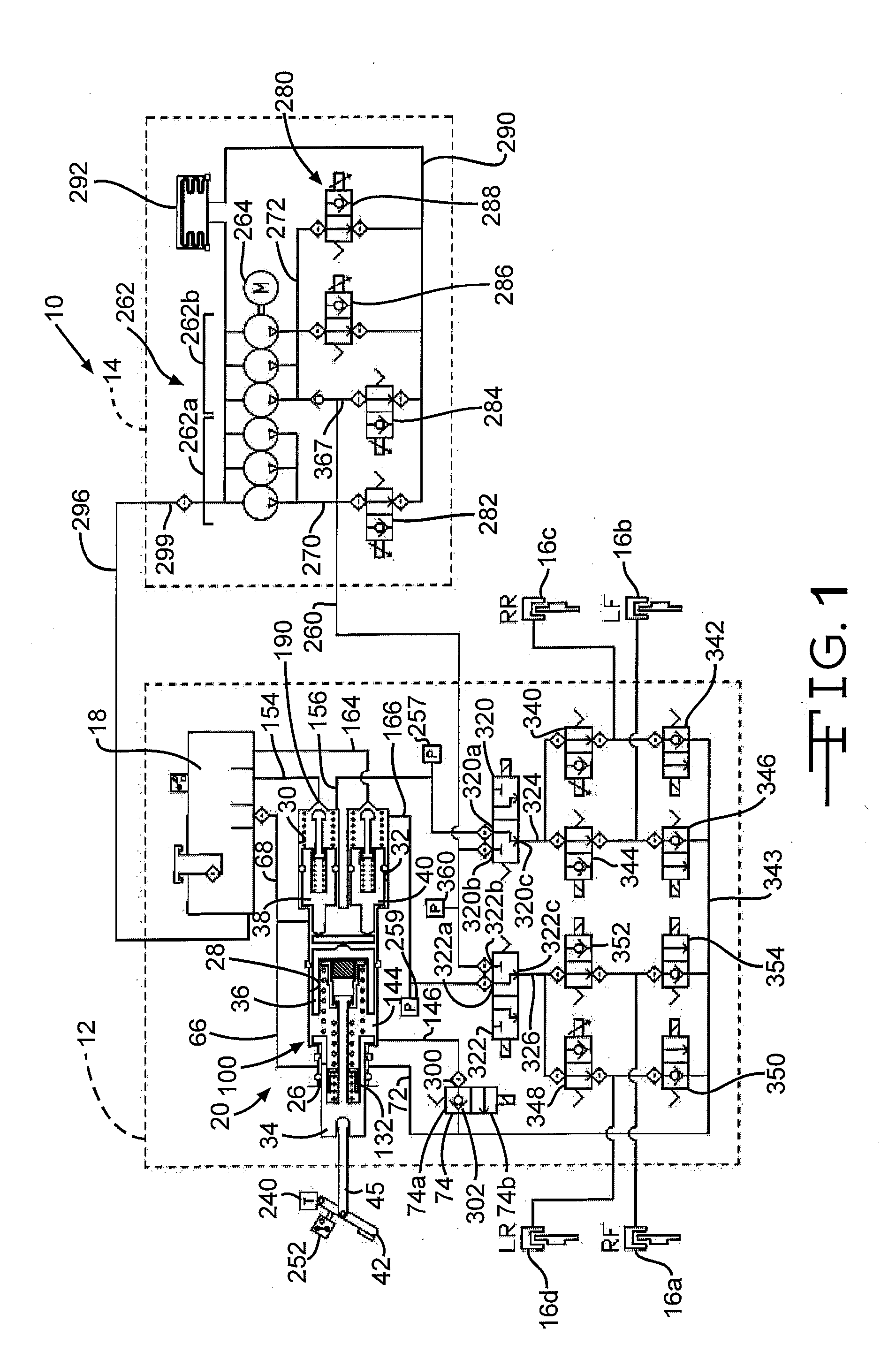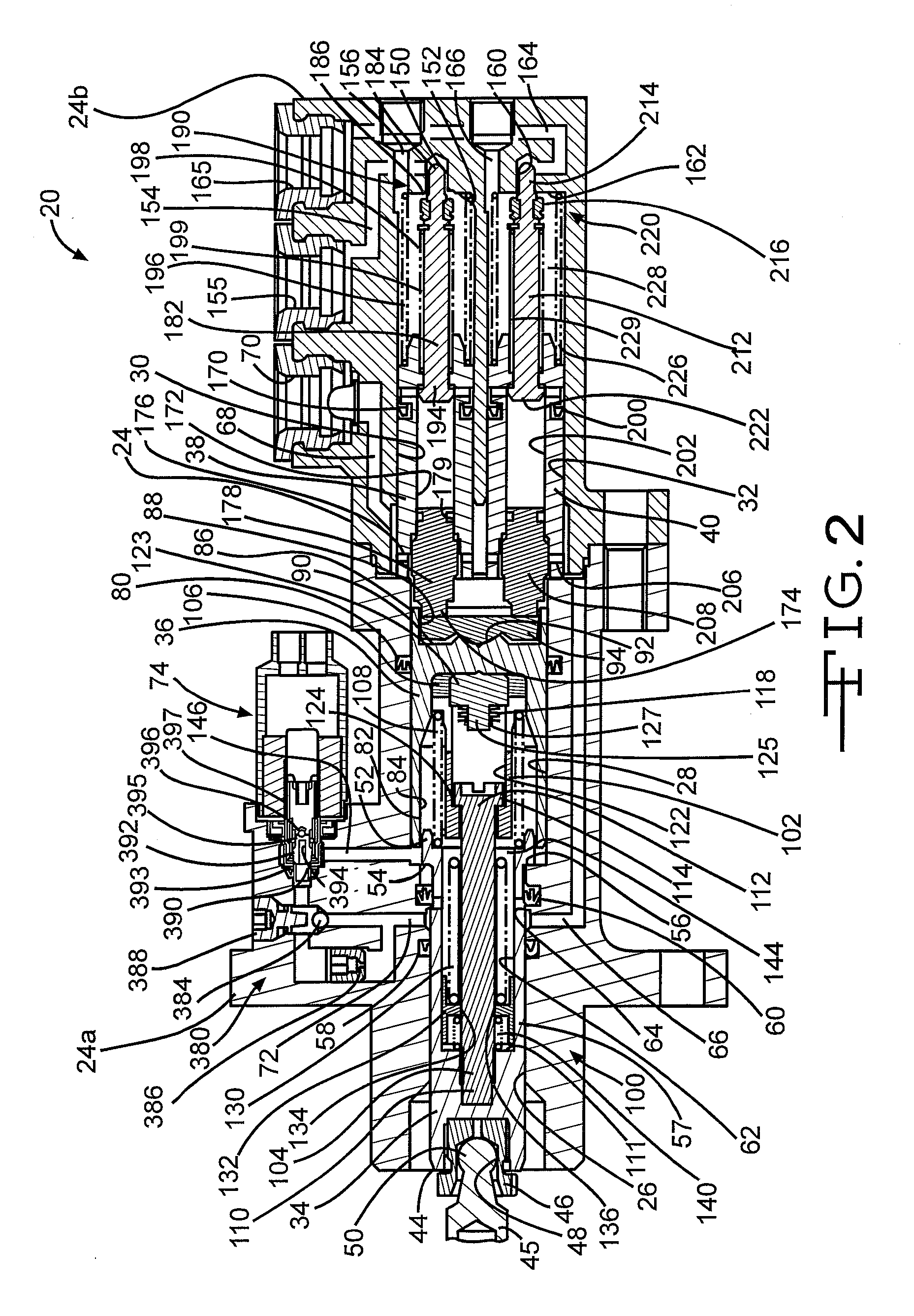Hydraulic brake system with controlled boost
a brake system and hydraulic technology, applied in the direction of braking systems, rotary clutches, fluid couplings, etc., can solve the problems of increased stopping distance, increased slippage between the wheel and the road surface, and possible loss of directional control
- Summary
- Abstract
- Description
- Claims
- Application Information
AI Technical Summary
Benefits of technology
Problems solved by technology
Method used
Image
Examples
first embodiment
[0033]Referring now to the drawings, there is schematically illustrated in FIG. 1 a vehicle brake system, indicated generally at 10. The brake system 10 is a hydraulic boost braking system in which boosted fluid pressure is utilized to apply braking forces for the brake system 10. The brake system 10 may suitably be used on a ground vehicle such as an automotive vehicle having four wheels with a wheel brake associated with each wheel. Furthermore, the brake system 10 can be provided with other braking functions such as anti-lock braking (ABS) and other slip control features to effectively brake the vehicle, as will be discussed below.
[0034]The brake system 10 generally includes a hydraulic control unit, indicated by broken lines 12, and a power pack assembly, indicated by broken lines 14. The components of the hydraulic control unit 12 may be housed together in a single unit or block. The components of the power pack assembly 14 may also be housed in a single unit or block. As schem...
second embodiment
[0062]There is illustrated in FIG. 6 a vehicle brake system indicated generally at 400. Similar to the above described brake system 10, the brake system 400 may suitably be used on a ground vehicle such as an automotive vehicle having four wheels and a wheel brake for each wheel. Furthermore, the brake system 400 can be provided with other braking functions such as anti-lock braking (ABS), other slip control features, and regenerative braking blending to effectively brake the vehicle. The brake system 400 is similar in function and structure of some aspects of the brake system 10 and, therefore, like numbers and or names may be used to reference similar components.
[0063]The brake system 400 generally includes a hydraulic control unit which may be the same hydraulic control unit 12 as described above with respect to FIGS. 1-5. One of the differences between the systems 10 and 400 is that the brake system 400 uses a different power pack assembly 414. The power pack assembly 414 provid...
third embodiment
[0071]There is illustrated in FIG. 7 a vehicle brake system indicated generally at 460. Similar to the above described brake systems 10 and 400, the brake system 460 may suitably be used on a ground vehicle such as an automotive vehicle having four wheels and a wheel brake for each wheel. Furthermore, the brake system 460 can be provided with other braking functions such as anti-lock braking (ABS), other slip control features and regenerative brake blending to effectively brake the vehicle. The brake system 460 is similar in function and structure to the brake system 400 (and the brake system 10) and, therefore, like numbers and or names may be used to reference similar components.
[0072]The brake system 460 generally includes the same components as the brake system 400 illustrated in FIG. 6, but packages the components differently. In the brake system 460, a hydraulic control unit 462 includes the brake pressure unit 20, the reservoir 18, and the simulation valve 74. The remainder o...
PUM
 Login to View More
Login to View More Abstract
Description
Claims
Application Information
 Login to View More
Login to View More - R&D
- Intellectual Property
- Life Sciences
- Materials
- Tech Scout
- Unparalleled Data Quality
- Higher Quality Content
- 60% Fewer Hallucinations
Browse by: Latest US Patents, China's latest patents, Technical Efficacy Thesaurus, Application Domain, Technology Topic, Popular Technical Reports.
© 2025 PatSnap. All rights reserved.Legal|Privacy policy|Modern Slavery Act Transparency Statement|Sitemap|About US| Contact US: help@patsnap.com



